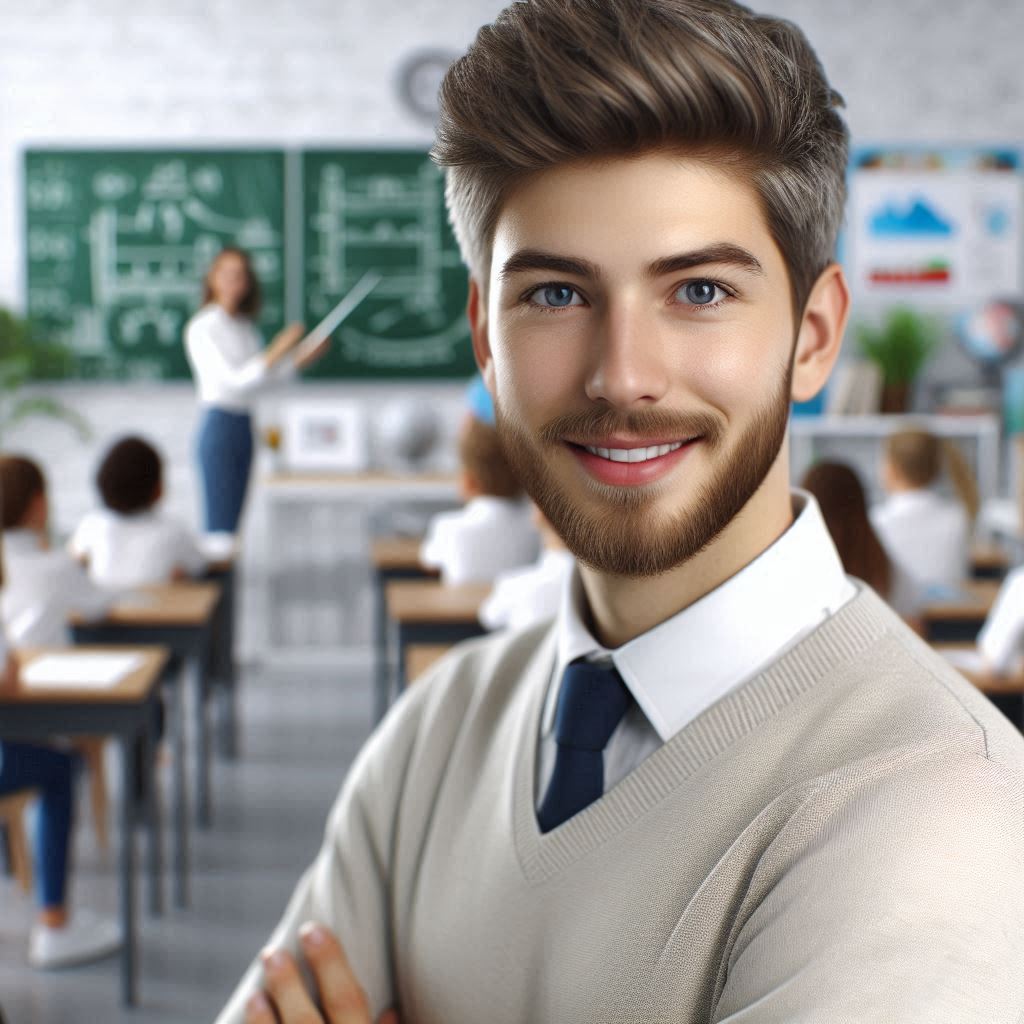Introduction
Special education is designed to meet the unique needs of students with disabilities, ensuring they receive an equitable education.
However, educators often face significant challenges in this field.
These include diverse learning needs, varying levels of support required, and the need for tailored instructional approaches.
The traditional one-size-fits-all teaching methods frequently fall short, making it crucial to explore innovative strategies to enhance learning outcomes.
Innovative teaching methods are vital in special education because they address these challenges by offering more personalized, flexible, and engaging learning experiences.
For instance, technology integration has transformed the classroom environment.
Assistive technologies like text-to-speech software and interactive learning apps provide students with tools to better understand and engage with the curriculum.
Virtual and augmented reality can create immersive learning experiences, helping students grasp complex concepts through interactive simulations.
Another effective approach is differentiated instruction, which tailors lessons to accommodate various learning styles and abilities.
By using a variety of instructional methods—such as visual aids, hands-on activities, and oral explanations—educators can better meet individual student needs.
Universal Design for Learning (UDL) principles also promote inclusivity by providing multiple means of representation, expression, and engagement, ensuring that all students have access to the content in ways that suit their learning preferences.
Furthermore, collaborative teaching strategies, such as co-teaching models, can leverage the strengths of multiple educators.
This approach allows for smaller group instruction and more individualized attention, enhancing the overall learning experience.
In fact, innovative teaching methods are essential for overcoming the challenges in special education.
By embracing technology, differentiated instruction, and collaborative strategies, educators can create more inclusive and effective learning environments that cater to the diverse needs of students with disabilities.
Understanding Different Learning Styles
In special education, recognizing and adapting to diverse learning styles is essential for fostering an inclusive and effective learning environment.
Each student has unique ways of processing and understanding information, and tailoring teaching methods to these styles can significantly enhance their educational experience.
Various learning styles in special education
Learning styles refer to the preferred ways individuals absorb, process, and retain information.
In special education, these styles often encompass visual, auditory, kinesthetic, and tactile modalities.
Visual learners benefit from visual aids like charts and diagrams, while auditory learners grasp concepts better through listening and verbal instructions.
Transform Your Career Today
Unlock a personalized career strategy that drives real results. Get tailored advice and a roadmap designed just for you.
Start NowKinesthetic learners, on the other hand, thrive through physical activities and hands-on experiences, and tactile learners engage most effectively through touch and manipulation of materials.
Strategies to Cater to Different Learning Styles
To address these diverse learning styles, educators can implement several strategies:
- Visual Aids: Incorporate visual elements such as graphic organizers, videos, and infographics to support visual learners. Color-coded materials and visual schedules can also help in reinforcing instructions and concepts.
- Auditory Techniques: Utilize audiobooks, verbal explanations, and discussions to engage auditory learners. Encouraging students to verbalize their understanding and participate in group conversations can also be beneficial.
- Kinesthetic Activities: Integrate movement and hands-on activities into lessons for kinesthetic learners. Activities like role-playing, building models, or using educational games can make learning more dynamic and engaging.
- Tactile Tools: Provide tactile materials such as textured surfaces, manipulatives, and interactive tools for tactile learners. These resources help in reinforcing concepts through physical interaction and exploration.
By recognizing and addressing these various learning styles, educators in special education can create a more personalized and effective learning environment.
Adapting teaching methods to meet the needs of each student not only enhances their comprehension and retention but also promotes a more inclusive and supportive classroom atmosphere.
Read: How to Become a Special Education Teacher in the USA
Utilizing Technology in the Classroom
Benefits of incorporating technology in special education
Incorporating technology into special education classrooms offers transformative benefits, creating a more inclusive and engaging learning environment for students with disabilities.
By leveraging various technological tools, educators can cater to diverse learning needs and enhance educational outcomes.
One of the primary benefits of utilizing technology in special education is its ability to provide personalized learning experiences.
Assistive technology tools, such as text-to-speech software and interactive apps, help students with reading difficulties or visual impairments by converting text into spoken words or presenting information in a more accessible format.
This customization ensures that students can learn at their own pace and in ways that suit their individual needs.
Another significant advantage is the enhanced engagement technology brings to the classroom.
Tools like interactive whiteboards and educational software offer dynamic and interactive learning experiences, capturing students’ attention and making lessons more engaging.
These technologies not only facilitate better understanding but also keep students motivated and interested in their studies.
Examples of assistive technology tools for students with disabilities
Assistive technology examples are varied and tailored to specific needs.
For instance, speech recognition software aids students with motor impairments by allowing them to control their computers and complete assignments through voice commands.
Similarly, communication devices such as picture exchange systems and voice-output devices support non-verbal students in expressing their thoughts and participating more actively in class.
Additionally, specialized apps designed for learning disabilities provide interactive exercises and games that reinforce skills in a fun and engaging manner.
For example, apps that focus on phonics and reading comprehension can offer tailored practice and immediate feedback, which is crucial for students with learning disabilities.
In summary, integrating technology into special education enhances personalized learning, engagement, and accessibility.
By utilizing assistive technology tools, educators can better support students with disabilities, ultimately fostering a more inclusive and effective learning environment.
Transform Your Career Today
Unlock a personalized career strategy that drives real results. Get tailored advice and a roadmap designed just for you.
Start NowRead: Roles and Responsibilities of a Special Education Teacher
Implementing Individualized Education Plans (IEPs)
In special education, Individualized Education Plans (IEPs) are crucial for addressing the unique needs of each student.
Personalized learning plans ensure that students with disabilities receive the tailored support necessary for their academic success and personal growth.
By focusing on individual strengths and challenges, IEPs create a roadmap for educational progress that is both inclusive and effective.
Importance of personalized learning plans for students in special education
The importance of IEPs lies in their ability to cater to diverse learning needs.
Each IEP is a legal document that outlines specific educational goals and the supports required to achieve them.
This personalized approach helps in bridging gaps in learning, ensuring that students are not only included in the classroom but also engaged in meaningful ways.
For students with special needs, a well-structured IEP can be transformative, offering a tailored educational experience that promotes their development and academic achievement.
Tips for creating effective IEPs to meet each student’s needs
Creating effective IEPs involves several key strategies.
First, it is essential to gather comprehensive information about the student, including their strengths, needs, and interests.
This data should be collected through assessments, observations, and input from parents and teachers.
Setting clear, measurable goals is the next step; these goals should be specific and achievable, reflecting the student’s unique learning requirements.
Another important tip is to involve the student in the IEP process whenever possible.
This not only empowers them but also ensures that their preferences and aspirations are considered. Additionally, regular reviews and updates of the IEP are crucial.
These evaluations allow for adjustments based on the student’s progress and changing needs, ensuring that the plan remains relevant and effective.
In short, IEPs are a cornerstone of special education, offering a personalized approach to learning that supports student success.
By focusing on individual needs and continuously refining the plan, educators can create an inclusive educational environment that fosters growth and achievement for every student.
Read: Impact of Instructional Coordinators on Schools

Collaborating with Parents and Support Staff
In special education, effective collaboration is essential for fostering student growth and success.
Two critical aspects of this collaboration are building strong partnerships with parents and caregivers and working with support staff, such as speech and occupational therapists.
Transform Your Career Today
Unlock a personalized career strategy that drives real results. Get tailored advice and a roadmap designed just for you.
Start NowBuilding Strong Partnerships with Parents and Caregivers
Parents and caregivers play a pivotal role in a child’s educational journey.
Establishing a strong partnership with them is crucial for creating a supportive learning environment.
This involves regular communication, actively listening to their insights, and incorporating their observations into the educational plan.
Teachers should organize frequent meetings, offer clear updates on progress, and provide actionable strategies for parents to use at home.
By valuing and respecting the input of parents, educators can tailor interventions more effectively and ensure that learning extends beyond the classroom.
Working with Support Staff
Collaborating with support staff, including speech therapists and occupational therapists, enhances the educational experience for students with special needs.
These professionals bring specialized skills that complement classroom teaching.
Speech therapists can address communication challenges, while occupational therapists focus on improving fine motor skills and daily living activities.
By integrating their expertise into lesson plans and classroom activities, teachers can create a more holistic approach to student development.
Effective collaboration involves regular team meetings to discuss goals, share progress, and adjust strategies as needed.
It’s also important to create a shared understanding of each student’s needs and the best methods for addressing them.
This integrated approach ensures that all aspects of a student’s development are supported, leading to more cohesive and effective educational outcomes.
Basically, building strong partnerships with parents and caregivers, coupled with effective collaboration with support staff, is fundamental to the success of innovative teaching methods in special education.
This collaborative approach not only enhances learning but also empowers students to achieve their full potential.
Read: Effective Communication for Instructional Coordinators
Incorporating Hands-On Learning Activities
Benefits of hands-on learning for students with disabilities
Incorporating hands-on learning activities in special education can significantly enhance the educational experience for students with disabilities.
This approach allows students to interact directly with materials and concepts, which can lead to deeper understanding and retention.
ands-on learning caters to diverse learning styles, making it especially beneficial for those who may struggle with traditional teaching methods.
One of the primary benefits of hands-on learning for students with disabilities is the increased engagement it fosters.
By actively participating in learning activities, students are more likely to stay focused and motivated.
Transform Your Career Today
Unlock a personalized career strategy that drives real results. Get tailored advice and a roadmap designed just for you.
Start NowHands-on activities also provide opportunities for students to practice and apply skills in a tangible way, which can help solidify their understanding of concepts.
Examples of hands-on activities that promote active engagement and understanding
For example, using tactile materials such as textured letters and numbers can assist students with visual impairments in learning to read and write.
These materials provide sensory feedback that supports their learning process.
Similarly, incorporating interactive tools like manipulatives in math lessons allows students to explore mathematical concepts through physical manipulation, which can be particularly useful for those with cognitive or motor impairments.
Another effective hands-on activity is the use of educational games that incorporate physical movement.
These games can reinforce learning objectives while also providing a fun and engaging way for students to practice skills.
For instance, a game that involves matching objects with corresponding symbols or categories can help students with autism improve their classification and sorting abilities.
In a nutshell, hands-on learning activities offer numerous benefits for students with disabilities, including increased engagement, practical application of skills, and enhanced understanding.
By integrating these activities into special education curricula, educators can create a more inclusive and effective learning environment that supports the diverse needs of their students.
Promoting Social and Emotional Development in Special Education
Fostering social skills and emotional well-being is vital in special education, as it significantly impacts students’ overall development and academic success.
Special education environments must prioritize not only academic learning but also the social and emotional growth of students with diverse needs.
By addressing these areas, educators can create more inclusive and supportive classrooms.
Importance of Fostering Social Skills and Emotional Well-Being
For students with special needs, developing social skills and emotional regulation is crucial for building positive relationships and navigating daily interactions.
Social skills such as communication, empathy, and cooperation are essential for successful integration into both academic and social settings.
Emotional well-being, including self-regulation and resilience, helps students manage stress, handle frustrations, and adapt to changes.
Together, these competencies support a more balanced and fulfilling school experience.
Strategies for Promoting Social Interaction and Emotional Regulation
- Structured Social Skills Training: Implementing programs that teach specific social skills through role-playing, social stories, and peer interactions can help students practice and understand appropriate behaviors. Structured activities, such as group projects and cooperative games, provide real-life opportunities for students to engage with others and apply their social skills.
- Emotional Regulation Techniques: Introducing tools and techniques for managing emotions can empower students to handle their feelings constructively. Techniques such as deep breathing exercises, mindfulness activities, and the use of visual aids like emotion charts can aid in recognizing and regulating emotions.
- Positive Reinforcement: Encouraging and rewarding positive social interactions and emotional responses reinforces desired behaviors. Using a system of praise and tangible rewards helps motivate students to practice and maintain these skills.
- Individualized Support: Tailoring support to each student’s unique needs ensures that interventions are effective. Individualized Education Programs (IEPs) can include specific goals and strategies for enhancing social and emotional development based on the student’s strengths and challenges.
By integrating these strategies into the classroom, educators can help students with special needs develop essential social and emotional skills, leading to a more inclusive and supportive learning environment.
Differentiating Instruction
In special education, differentiating instruction is crucial for addressing the diverse needs of students.
This approach ensures that each student receives the support and challenges necessary to thrive.
Differentiating instruction involves tailoring educational strategies to accommodate varying abilities, learning styles, and interests.
Transform Your Career Today
Unlock a personalized career strategy that drives real results. Get tailored advice and a roadmap designed just for you.
Start NowTailoring Instruction to Meet Diverse Needs
To effectively differentiate instruction, educators must first understand each student’s unique strengths and areas for growth.
This can be achieved through comprehensive assessments, including formal tests, observations, and one-on-one discussions.
Once educators have a clear understanding, they can adapt their teaching methods accordingly.
One method involves modifying content delivery.
or instance, visual aids can be used for students who benefit from visual learning, while hands-on activities might be more effective for kinesthetic learners.
Additionally, breaking down tasks into smaller, manageable steps can help students with learning disabilities stay engaged and make progress.
Providing Individualized Support and Challenges
Differentiated instruction also includes offering individualized support.
This might mean providing extra time on assignments, offering additional resources or tools, or incorporating one-on-one or small group instruction.
Educators can use technology, such as adaptive software, to create personalized learning experiences that cater to each student’s needs.
On the flip side, providing appropriate challenges is equally important.
Teachers should set high expectations and offer advanced tasks or enrichment activities for students who need a greater challenge.
This helps maintain engagement and encourages students to reach their full potential.
Incorporating differentiated instruction in special education not only supports diverse learning needs but also fosters an inclusive and responsive classroom environment.
By tailoring instruction and providing individualized support, educators can help all students achieve their educational goals.
Assessment and Progress Monitoring
In special education, effective teaching hinges on understanding each student’s unique needs and adapting strategies to support their growth.
Central to this process are robust assessment and progress monitoring techniques, which ensure that educational methods are tailored to individual requirements and are yielding positive outcomes.
Strategies for Assessing Student Progress and Growth
- Frequent Formative Assessments: Implementing regular formative assessments helps teachers gauge students’ understanding and skills. These assessments, which can include quizzes, observations, and interactive activities, provide immediate feedback on student performance and highlight areas needing reinforcement.
- Customized Benchmark Assessments: Setting specific, measurable benchmarks allows educators to track progress over time. For students with special needs, these benchmarks should be individualized, considering their unique learning profiles and goals.
- Behavioral Observations: Observing students in various settings offers insights into their behavioral and emotional responses. This method is particularly useful for assessing social skills, engagement levels, and response to different teaching methods.
- Student Self-Assessments: Encouraging students to reflect on their own learning can be empowering. Self-assessments help students recognize their progress and set personal goals, fostering greater self-awareness and motivation.
Importance of Ongoing Monitoring and Adjustment
Ongoing monitoring is crucial for adjusting teaching methods to meet evolving student needs.
Regularly reviewing assessment data allows educators to identify patterns, make informed decisions, and adapt instruction as necessary.
For instance, if a particular strategy is not yielding expected results, teachers can modify their approach or implement alternative methods.
Effective progress monitoring involves a collaborative approach, engaging students, parents, and other professionals in the evaluation process.
Transform Your Career Today
Unlock a personalized career strategy that drives real results. Get tailored advice and a roadmap designed just for you.
Start NowThis teamwork ensures that strategies remain aligned with student needs and educational goals.
All in all, innovative teaching methods in special education rely heavily on continuous assessment and progress monitoring.
By employing diverse assessment strategies and staying responsive to student progress, educators can create a dynamic learning environment that supports and enhances the growth of every student.
Conclusion
Special education demands teaching methods tailored to meet diverse and unique needs of students with disabilities.
The effectiveness of these methods can significantly impact learning outcomes and overall student success.
Embracing innovative approaches can create an inclusive and supportive environment where every student has the opportunity to thrive.
One such method is the use of assistive technology.
Tools like speech-to-text software, interactive whiteboards, and specialized apps can help bridge gaps in communication and learning.
These technologies allow students to engage with material in ways that align with their individual strengths and challenges.
Another innovative approach is differentiated instruction.
This involves adjusting teaching strategies based on each student’s learning style, pace, and level of understanding.
By offering multiple ways to access content—such as visual aids, hands-on activities, and auditory supports—educators can cater to varied learning preferences and needs.
Universal Design for Learning (UDL) is another effective framework.
UDL focuses on creating flexible learning environments that accommodate all learners by providing multiple means of representation, engagement, and action/expression.
This approach helps ensure that all students can access the curriculum and demonstrate their understanding in diverse ways.
Incorporating social-emotional learning (SEL) into the classroom can also be beneficial. SEL programs help students develop essential skills such as self-awareness, self-management, and social skills.
These competencies can enhance students’ ability to interact positively with peers, manage their emotions, and navigate academic challenges.
[E-Books for Sale]
The Big Book of 500 High-Paying Jobs in America: Unlock Your Earning Potential
$19.99 • 500 High-Paying Jobs • 330 pages
Explore 500 high-paying jobs in America and learn how to boost your career, earn more, and achieve success!
See All 500 High-Paying Jobs of this E-Book
1001 Professions Without a Degree: High-Paying American Jobs You Can Start Now
$19.99 • 1001 Professions Without a Degree • 174 pages
Discover 1001 high-paying jobs without a degree! Unlock career tips, skills, and success strategies for just $19.99!




